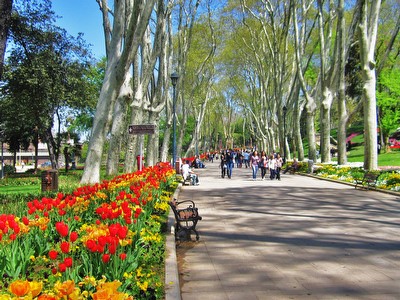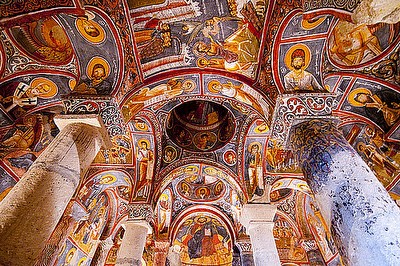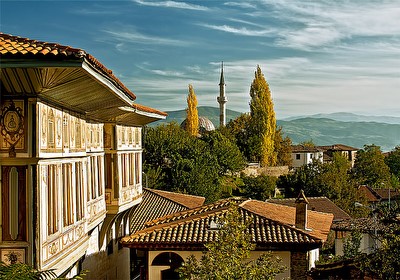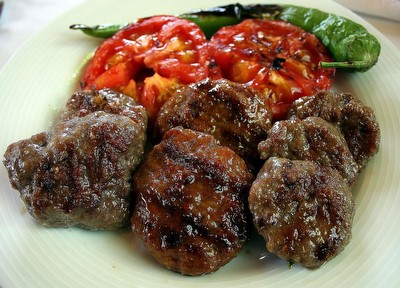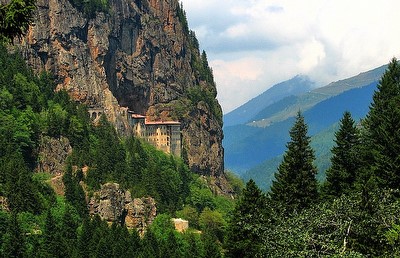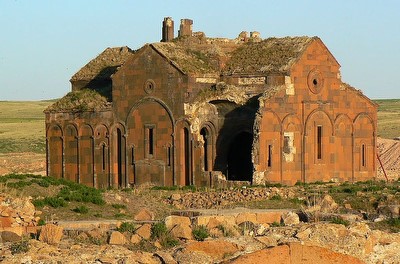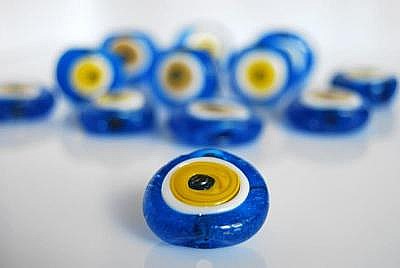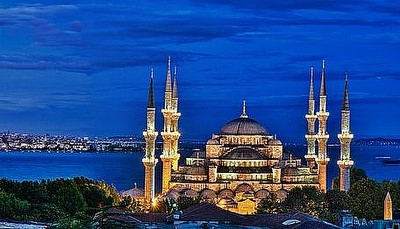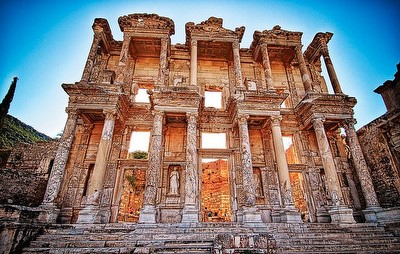CAPPADOCIA CHURCHES
Whilst some of the finest frescoes are to found in the churches of the Goreme Open Air Museum, there are a large number of rarely visited churches. These astonishing medieval churches hewn into the soft tufa imitate the shape of the conventional masonary churches, with domes and columns which are of no structural signifigance and the amazing frescoes that cover the ınterior are spectacular.
At the back of the museum is the Aynalı Church, decorated, not with frescoes, but with vivid red and white geometrical patterns. It is thought to have been part of a monastic complex and contained a large hall, running from the back of the church. There are tunnels which branch off and lead to rooms which could be sealed with circular stones, such as those found in the underground cities.
The 11th C Yusuf Koç Church, close to the centre of Goreme, is named after the man on whos land ıt stood on. The church is accessed by a metal ladder and the interior, with its twin domes, is decorated with a painting of St George, who was the Patron Saint of the region, slaying the Dragon. There are also life-sized portraits of St Helena and Constantine, holding the True Cross, which Helena is believed to have discovered whilst on a pilgrimage to Jerusalem.
There is an open-sided cave in which there is a refectory table cut into the side of a wall.
Close to the Yusuf Koç Church, the Durmuş Kadir Church is one of the oldest in the area and dates back to the sixth or seventh century. Although it lacks glorious frescoes its attraction is that it is as large as many masonry built church. The free-standing ambo, or pulpit, dominates the naos, nave and the partially surviving stone screen, and the synthronon, a tiered bench ringing the apse, are features which are to be found in some of the most impressive Byzantine churches.
The Haçlı, Cross, Church in the Güllüdere, Rose Valley, is accessed via a steep metal ladder. The apse is decorated with a beautiful 10th C frescoe of the Pantocrator, which despite its age is virtually intact. A short distance away is the Three Crosses Church, the Uçhaçli, which contains several frescoes which have, sadly, been damaged. The Columned Church, the Kolonlu has a number of tall pillars, from which it takes its name
The façade of the 10thC Church of John the Baptist ın Cavusin has sheered away, exposing its painings of the Archangels to the elements. The barrel-vaulted ceiling is covered entirely with paintings depicting biblical tales. There are frescoes of the Emperor Nicephorus Focas and his wife, who visited the area around 960.
South of Nevşehir is the town of Gülşehir where the Church of St John, Karşı Kilise is hidden behind a number of modern houses. The conical rock formation that houses the church contains a number of frescoes which have been beautifully restored. Viewing them has been made easier with the construction of a platform reached by a spiral ladder that allows you to admire the detail close up. The dramatic scene of the Last Judgment, painted on the west wall, is an image that is rarely shown in Cappadocia.
The 11th or 12th C Church of St Theodore, Yesilöz, the Tagor Church, is one of the hidden treasures of Cappadocia. It has a unique upper gallery, thought to be for women worshippers, that overlooks the central nave. The windows, which are let into the raised dome, allow light to flood into the church.
Hidden inside one of the fairy chimneys that stand alongside the road to Şahinefendi is the Church of the Forty Martyrs. The frescoes which adorn the interior have been recently restored, depict the dramatic yet strange story of the forty Christian martyrs who came from Sivaş. These men refused to renownce their faith and were taken out onto a frozen lake and left to die. One image shows a man who recants and is replaced by a local official who has become a convert and is depicted casting off his official robes to join the men on the ice. The painting, unusually, bears an inscription that dates it to 1216.


